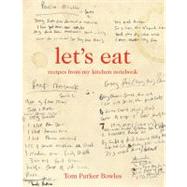
TOM PARKER BOWLES is an avid home cook and award-winning food writer, whose weekly column is carried by The Mail on Sunday (UK). He is the author of The Year Of Eating Dangerously and E is For Eating, the food editor of British Esquire, and has also written for Tatler and a variety of other publications. He lives in London.
The New copy of this book will include any supplemental materials advertised. Please check the title of the book to determine if it should include any access cards, study guides, lab manuals, CDs, etc.
The Used, Rental and eBook copies of this book are not guaranteed to include any supplemental materials. Typically, only the book itself is included. This is true even if the title states it includes any access cards, study guides, lab manuals, CDs, etc.